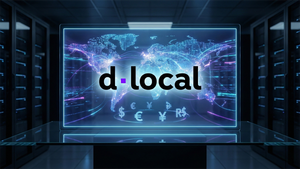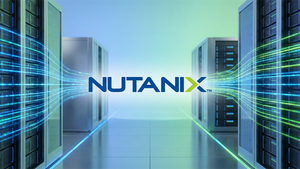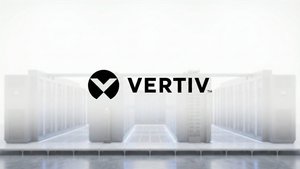“ComEd 2030” priorities support customers and Illinois’ Climate and Equitable Jobs Act goals
To outline ComEd’s vision for how it will advance a low-carbon energy future that benefits all of its customers and communities in northern Illinois, the electric company today released its “ComEd 2030” vision. ComEd 2030 identifies key trends and priorities for how ComEd will meet customers’ quickly changing needs and expectations for the rest of this decade and beyond.
“The ComEd electric grid will need to work in new ways to enable millions of electric vehicles hitting the roads and plugging in. Customers will need easy ways to connect the many thousands of clean distributed energy resources that are coming online, such as wind and solar power and battery storage. And ComEd’s service must remain highly reliable and resilient for customers as climate change challenges us with more severe weather events,” said ComEd CEO Gil Quiniones.
ComEd 2030 sets out a vision of how the company’s investments in its infrastructure and customer programs can advance critical policy goals, including the goals of the landmark Climate and Equitable Jobs Act (CEJA), which aims to decarbonize the state’s power sector by 2045. And it is consistent with the formal Grid Plan for the years 2023 through 2027 that ComEd will present to the Illinois Commerce Commission in January 2023.
ComEd 2030 Priorities
ComEd 2030 introduces five pillars that will guide ComEd’s work for customers and communities:
- Carbon-free: ComEd expects its grid will be capable of delivering 100%, 24/7 carbon-free power in northern Illinois that will enable increasingly electrified transportation, building and industrial sectors. In support, ComEd has set a 2030 target of being able to support up to 1.8 million electric vehicles on the road in northern Illinois.
- Flexibility and resilience: ComEd will adapt to and help mitigate the impacts of climate change and other threats by making its infrastructure stronger, more dynamic and capable of withstanding increasing weather and security risks through careful planning and investments.
- Efficiency and affordability: ComEd will provide service that is more reliable at the lowest practical cost to its customers by using technology that optimizes operations and efficiency and minimizes costs.
- Empowerment and equity: ComEd’s service will be a catalyst for positive community outcomes, innovation and job creation across the region and especially in historically under-resourced communities. To support this pillar, ComEd has set a 2030 target of helping customers access up to $1 billion of cumulative energy assistance.
- Simple and intuitive energy choices: ComEd will enable its customers to make cleaner energy choices easily and intuitively, bringing confidence and security into low-carbon energy transactions. Under this pillar, ComEd has set a 2030 target of safely and reliably integrating distributed clean energy resources serving approximately 400,000 customers.
ComEd 2030 is centered on the more than 9 million people who call the company’s northern Illinois service territory home, and consistent with the CEJA law, focuses on ensuring that under-resourced communities are prioritized in the region’s clean energy transition.
“Most important is our commitment to make sure the benefits of the digital and decarbonized energy future flow equitably to communities with the greatest need,” Quiniones said. “ComEd is one of the very few entities in the region that serves everyone. Because we are a company that operates in the public trust, we have a very special focus on community well-being, justice and opportunity for all.”
Harnessing Customer and Industry Trends
ComEd 2030 identifies five key trends for the changing customer needs ComEd will need to meet and its opportunities to provide more value for all of the communities it serves:
- Entire sectors of the economy – including transportation, buildings and industry – are electrifying to reduce reliance on fossil fuels and carbon emissions that contribute to climate change and localized air pollution that threatens public health.
- Renewable energy such as solar and wind, as well as innovations like battery storage, are expanding rapidly and require a more decentralized approach to supplying and managing the flow of power.
- Volatile weather driven by climate change and other external forces present risks to the continued reliability and resilience of the electric grid.
- Technology is enabling customers to become more sophisticated energy consumers.
- Technology is enabling electric companies to become better operators.
In addition to being consistent with ComEd’s 2023-2027 Grid Plan, ComEd 2030 is also coordinated with parent company Exelon’s “Path to Clean,” which sets goals to reduce operations-driven emissions across the company’s businesses by 50% by 2030 and achieve net-zero operations by 2050. In addition to reducing company emissions, Path to Clean is focused on supporting customers and communities in reaching their clean energy and emissions reduction goals.
A Position of Strength
ComEd 2030 builds on significant performance improvements ComEd has made in the last decade to deliver safe, reliable, clean and affordable energy to the more than 9 million people who call northern Illinois home.
“To prepare for the digital and decarbonized future, ComEd has important work ahead,” Quiniones said. “But we start from a position of strength. In the last decade, we have transformed our network into a modern grid. The value delivered to our customers and communities has been substantial.”
ComEd 2030 outlines those areas of improved performance that ComEd will build on, including:
- Reliability. ComEd customers experienced fewer power outages than customers of any comparable U.S. electric company for a fifth year in a row in 2021, according to a company analysis of 25 peer companies with 1 million or more customers. And, when outages did occur, service to ComEd’s customers was restored as fast or faster than customers of other comparable utilities.
- Value. ComEd customers’ bills have remained low compared to others’. The average monthly ComEd residential bill in fourth quarter 2022 was lower than the statewide average in 47 out of 50 U.S. states in 2021, based on U.S. Energy Information Administration data. In addition, ComEd has saved customers more than $7 billion on their bills since 2008 by providing tools, discounts and incentives that help them manage their energy use.
- Clean energy. There’s enough carbon-free power in ComEd’s region today to meet all of its customers’ demand for electricity 94% of the time year-round. ComEd also has connected to its grid over 330 megawatts (MW) of rooftop solar across northern Illinois, in addition to other renewables such as community solar projects and wind energy, and CEJA is expected to drive significant further growth in renewables in the region.
- Customer satisfaction. ComEd’s customer satisfaction increased 25% from 2011 to 2021 as measured by JD Power, and it continues to increase. This is due to strides in reliability and value, as well as significant investments in customer tools and capabilities.
Read the full ComEd story here.
About ComEd
ComEd is a unit of Chicago-based Exelon Corporation (NASDAQ: EXC), a Fortune 200 energy company with approximately 10 million electricity and natural gas customers – the largest number of customers in the U.S. ComEd powers the lives of more than 4 million customers across northern Illinois, or 70 percent of the state’s population. For more information visit ComEd.com and connect with the company on Facebook, Twitter, Instagram and YouTube.
View source version on businesswire.com: https://www.businesswire.com/news/home/20230110005924/en/
Contacts
ComEd Media Relations
312-394-3500






